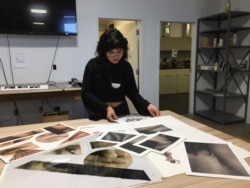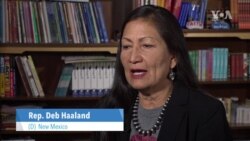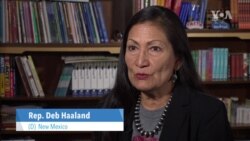Student Union
- By Julie Taboh
Education for Native Youth Is a Work in Progress
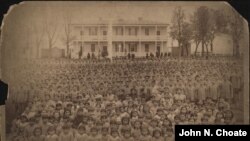
Some Native American children fear bullying and harassment so much, they hide their ethnicity at school, according to an education expert.
“A lot of Native students feel invisible,” said Katrina Boone, an associate partner at Bellwether Education Partners, a national nonprofit whose mission is to change education and life outcomes for underserved children.
Boone said many students have told her they don't feel comfortable letting their teachers know they are Native American because they have “been harassed and bullied, not just by peers, but by teachers in school.”
Native American students languish in schools across the country and often face worse outcomes than their white, black and Latino peers, she said. And the rates of high school and post-graduation trends are below the rates of their peers.
The suicide rate for Native youth exceeds the rate of their peers, Boone said. And national data indicate that rates for illicit drug use and tobacco use are higher for Native youth than for their peers, she said, citing the National Survey on Drug Use and Health from the Substance Abuse and Mental Health Services Administration (SAMHSA).
False history
Native Americans have been discriminated against “for hundreds of years,” Boone said, and forced to assimilate into a Euro-centric American culture.
“A lot of people view Native people and their socio-economic challenges and think the cause is Native people themselves,” she said. “But the actuality is that of course these challenges aren’t inherent to Native people. These are the effects of centuries of our government being terroristic, genocidal, and just generally unfair to Native American people since European first contact.”
Schools were used as a tool of assimilation, Boone said. “Very thoughtfully and very strategically by the government to destroy Native culture, to destroy Native language, to separate Native people, and to erase their cultures as they originally existed before first contact," she said.
Hundreds of thousands of Native children were sent -- often forcibly -- to Native American boarding schools where “they were punished for speaking their native language, banned from acting in any way that might be seen to represent traditional or cultural practices, stripped of traditional clothing, hair and personal belongings and behaviors reflective of their native culture,” according to the National Native American Boarding School Healing Coalition.
When they returned to their families, “they were so completely Americanized that they couldn't speak the language of their families and had lost their culture and traditions,” Boone said. The outcome is poverty, poor physical and mental health issues and subpar education outcomes “that we see in Indian country today."
Native schools
But Boone is quick to point out that there are pockets in the country where Native students excel.
“The schools where Native students excel acknowledge those students’ culture, they acknowledge those students’ Native languages, they involve communities in really rich ways, and usually those schools are controlled and run by Native people,” Boone said.
She points to the Waadookodaading Ojibwe Language Immersion School in northwestern Wisconsin, where students thrive in an academically rigorous environment that leverages the myriad assets of their Native culture and language.
There is also the Institute of American Indian Arts (IAIA), a 56-hectare (140-acre) campus in Santa Fe, New Mexico, where approximately 500 students are immersed in contemporary Native American arts and culture.
Members of about 100 tribes attend the school, President Robert Martin, a member of the Cherokee Nation, said. "So that's a lot of diversity,” he said, but the school’s main mission he points out, “will always reflect that indigenous or Native perspective.”
Dolores’ story
Native American and IAIA student Dolores Scarlett Cortez studies printmaking and photography. She said using those mediums allowed her to explore her roots. Cortez said she spent this past summer photographing members of her community, and in the process, found her calling.
“With my own indigenous cultures and especially coming to the school, I do feel like there's not enough resources on reservation land that caters to indigenous people,” she said. “I think it's really important to bring that representation back.”
The power of film
Anthony Deiter, who graduated from IAIA 25 years ago and is now a professor of virtual gaming and simulation at the school, teaches a new concept in filmmaking: moving images viewed on a spherical screen rather than a flat one.
He said he thinks the arts -- especially film -- are a powerful platform to help students understand their history, and they provide an opportunity to correct it where they can.
“We often look at those movies and go, ‘Well, that’s sort of not us,’ and I’m going ‘Well, maybe we need to start putting that voice out there. Maybe we need to take a place, like the Institute of American Indian Arts, [which] has the platform to jump off to tell our own stories,’” Dieter said.
Political push
“What I really feel needs to happen is we need to have more Native Americans in roles that we don't necessarily see them in now, or roles that we are a vast minority in,” said U.S. Congresswoman Deb Haaland, a Democrat who represents New Mexico's 1st congressional district and is one of two female Native American legislators elected to Congress.
At the University of New Mexico School of Law where Haaland graduated in 2006, she lobbied the state legislature to pass a bill giving Native Americans in-state tuition regardless of their residency. She paid out-of-state tuition at University of New Mexico School of Law because she resided in California several years before enrollment.
“I felt that I'm a Pueblo woman, and my family's been here since the 1280s, and that made me a 35th generation New Mexican. And it just seemed wrong that I had to pay out-of-state tuition," Haaland said.
She said she would like to see more Native Americans in leadership roles, especially women.
“We need more Native women CEOs. We need more Native women in public office. We need Native Americans in high military positions. We need to ensure that we are giving opportunities to not just Native Americans, but minority students all over the country," Haaland said.
Walking in two worlds
Boone, of Bellwether Education Partners, said she thinks that in order to succeed, Native Americans have to first be fully grounded in their own culture.
"New students have to understand that they live in, for better or worse, the country that we all live in today, and that there's a real need to be able to navigate that society, but with the strength within them from their first culture," she said.
"That's not different for any other kid in school," she said. "I saw in my teaching experiences that kids really need to be rooted in their families and their communities, and have some sort of cultural base.”
“Those are the kids who are the most successful," Boone said
See all News Updates of the Day
International students navigate financial challenges to pay US tuition
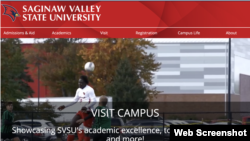
Navigating the complexities of higher education is challenging for many, but for international students, the financial hurdles can be particularly daunting.
Faced with skyrocketing tuition and fees, limited access to financial aid, and the instability of scholarships, many international students struggle to sustain their academic dreams.
Funding problems can lead some students to withdraw their college applications, as Alpha Daramy Sesay of Sierra Leone did. He abandoned his dream of studying journalism at the University of Maryland.
"I've applied to almost three universities in the past two years, and the board members were thrilled with my purpose statement and approved my application unambiguously," Sesay told VOA News. "However, I was unable to register due to the funding bottleneck, and the deadline for these offers has just lapsed."
Sesay had meticulously planned his move to the U.S., even stopping his scholarship search when a family member promised financial support. When Sesay was admitted to his dream school, however, the family support fell through, leaving him scrambling for scholarships that didn't cover all expenses.
Reflecting on his ordeal, Sesay advises future international students to seek scholarships and consult with school advisers early to avoid similar setbacks.
Talia Popovski, senior director of International Student Services at Valencia College in Orlando, Florida, suggests starting at a community college to save on tuition costs.
"Primarily, we have international students pursuing associate degrees," she said. "This is a major way for them to save money compared to going directly to a university."
Popovski emphasized the benefits of community colleges as pathways to universities, with many international students pursuing associate degrees before transferring to earn their bachelor's degrees. She also highlighted the role of on-campus work in alleviating financial burdens, suggesting institutional work-study programs as options.
According to NAFSA: Association of International Educators, a nonprofit dedicated to international education and exchange, international students are ineligible for federal work-study positions, necessitating discussions with advisers about employment eligibility. Popovski also mentioned that universities offer part-time jobs through their human resources departments, including paid internships, which provide additional financial support for education.
Student secures honor scholarship
Guilherme Lucas Mannarino, who received his associate degree from Valencia College, turned down 32 esports scholarships to study in Florida.
"I came to the United States [from Brazil] when I was 18 years old," Mannarino recalled. "I rejected all the scholarships that I acquired through esports, playing Fortnite."
Mannarino, who majored in finance at Valencia College, exemplified proactive planning in overcoming financial challenges.
Despite declining the esports scholarships, Mannarino secured an honor scholarship at Valencia College covering 50% of his tuition. He attributed his financial stability to planning ahead, staying on top of his academics, and acquiring an on-campus job.
To supplement his income, he conducted workshops advising Brazilian students on esports scholarships, allowing him to cover living expenses by finding roommates through social media.
"I was able to find a roommate on social media before coming to the U.S., which is a great way to save money," he said. "A year later, we had another roommate, which made my living costs cheaper, which is honestly the best way to save money in the U.S."
Tips for overcoming financial hurdles
Kadiatou Sow, from Conakry, Guinea, is studying at Saginaw Valley State University in University Center, Michigan.
"Managing the high cost of tuition and living expenses while studying abroad involves a strategic approach," Sow said. "I prioritize securing scholarships and grants tailored for international students to alleviate tuition expenses and sometimes cover living costs. Supplementing this with part-time work both on campus and in the local community provides a steady income for daily necessities."
She encourages fellow international students to balance work and studies effectively, understand visa work-hour regulations, and seek university support for financial aid options.
"Seeking guidance from university support services and staying informed about financial aid options are essential strategies for navigating these challenges successfully," Sow said.
Three ways international students can overcome financial hurdles:
1. Community college enrollment: Begin with an associate degree at a community college to save significantly on tuition costs before transferring to a university for a bachelor's degree.
2. On-campus employment: Explore institutional work-study programs and university job boards for part-time employment opportunities that complement studies and provide financial support.
3. Proactive financial planning: Save money before arriving in the U.S., seek scholarships tailored for international students, and explore paid internship opportunities to supplement income.
While financial obstacles are daunting, international students can achieve their academic aspirations through strategic planning, diligent scholarship pursuit and leveraging on-campus resources, advisers say.
By adopting proactive financial strategies and staying resilient, they can successfully navigate the challenges of financing their education abroad, ensuring a path to academic success and personal growth.
- By VOA News
Indian newspaper offers tips for US-bound students

Telangana Today, a newspaper in India, offers a list of tips and resources for students planning to study in the United States.
Among them:
- Prepare for your travel to the U.S., making sure to gather all necessary documents, including your passport and visa.
- Be sure to attend orientations.
- By VOA News
Michigan State international students get their own space

Michigan State University in East Lansing, Michigan, is setting aside a space in the International Center for international students.
Nidal Dajani, vice president of the school's International Student Association, said that the club plans to use the space to host events and hopes to collaborate with other student groups.
- By Dylan Ebs
International students find community during Pride Month

For LGBTQ+ international students, Pride Month, observed in June, is a unique time to reflect.
They hold on to multiple identities — both their LGBTQ+ identity and their cultural background — but coming to terms with them is not always easy.
For graduate student David Zhou, these identities can feel conflicting as transgender rights in China remain a controversial issue and spaces for LGBTQ people close. Zhou, 25, is transgender and pursuing an education in the STEM field at an urban university in the Midwestern United States.
VOA is using a pseudonym for Zhou’s first name and is not naming his university to protect his identity due to safety concerns back home in China. Zhou is not open about his transgender identity to his family.
During Pride Month, Zhou said he attended multiple LGBTQ+ events in his community and is surrounded by a supportive group of LGBTQ+ students who can relate to his experiences. But he’s not open about his identity to everyone on campus and said he doesn’t disclose his preferred pronouns to everyone to avoid transphobic comments.
“I feel like I have to make some judgments of the character of that person to see if they’re a good person to disclose [my identity] to,” Zhou said.
Zhou’s Pride Month celebrations included attending local markets with LGBTQ+ vendors and hanging out with his LGBTQ+ friends.
“They normalized being trans and for a long time I feel like trans identity is, should I say a vulnerability, brings me fear and worrying about discrimination, but having those events are helpful because it allowed me to see that queer people could just [live] openly,” he said.
At social events where few international students are present, Zhou said it can be tough to fit in.
“There's a lot of times like when they were talking about things I kind of, don't really understand, mostly because I kind of lack some background experience or knowledge,” he said.
Zhou said he is not aware of specific groups for LGBTQ+ international students at his university, but said international students are more prevalent in graduate programs and therefore find representation in organizations for LGBTQ+ graduate students.
In China, transgender individuals must obtain consent from an “immediate family member,” even for adults hoping to transition, which critics say limits the autonomy of transgender individuals while supporters say the policy protects doctors from violence by upset parents.
Struby Struble, a former coordinator of the University of Missouri LGBTQ+ Resource Center, told NAFSA: Association of International Educators in 2015 that LGBTQ+ international students face a “double barrier” on campus.
“With their international student friends, they feel isolated because they’re the LGBT one,” she said. “But then among the LGBT students on campus, they feel isolated because they’re the international one.”
Nick Martin, associate director of the Q Center, Binghamton University’s LGBTQ+ student support office, said when international students tour the center, there’s often a sense of hesitation as they enter a type of space that may not be present in their home country.
“I compare that to a year in after they've come into the space, they've again, maybe come to some of our events, they've got more connected,” he said.
Martin said graduate students have a unique interest in the Q Center as they may use the office for research and advocacy purposes that align with their studies.
“For older students, there may be hesitancy in a different way, but I think it's more in the vein of they want to do some of the advocacy work,” he said.
Martin said he thinks about how both his office and BU’s international student office can support students who come from countries with few — if any — protections for LGBTQ+ individuals.
“It's been a learning process of what those students really need, but I think I've kind of learned that a lot of students are just looking for the safe space that we offer,” Martin said.
- By VOA News
International students discuss US campus culture shock

International students at De Anza College in Cupertino, California, talked about culture shock in an article in La Voz News, the student newspaper.
"It felt like a major culture shock. Everything was so different, from academics to mannerism," said a student from Mexico.
Read the full story here.




